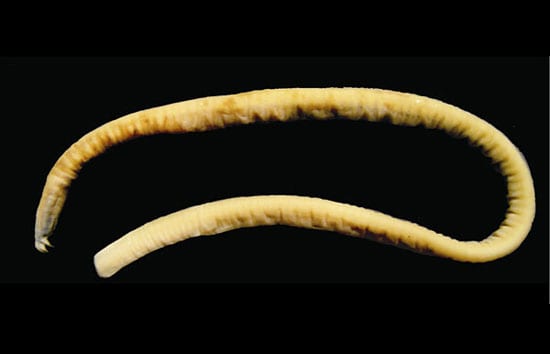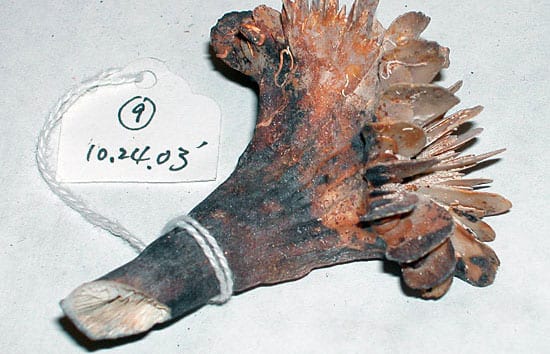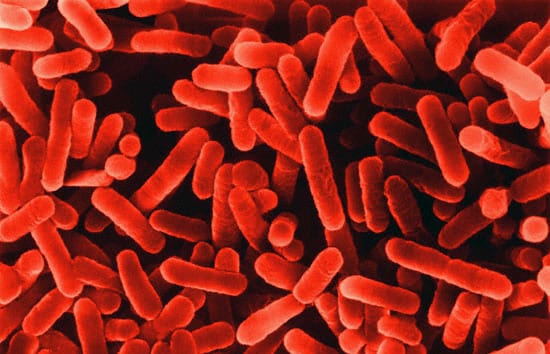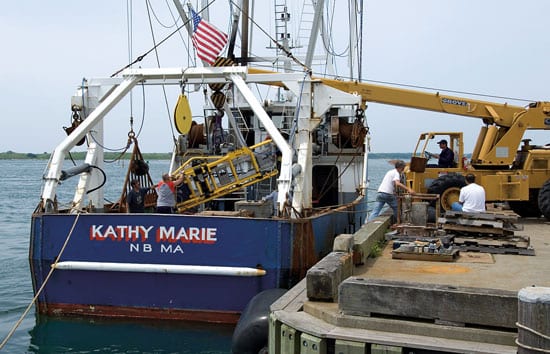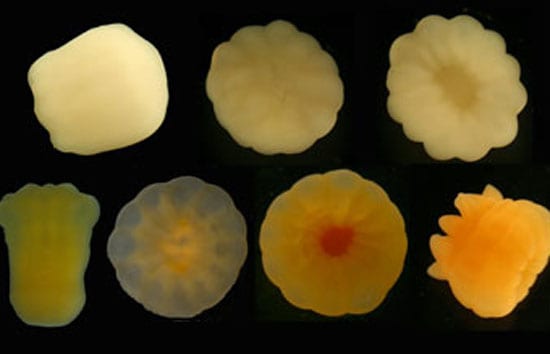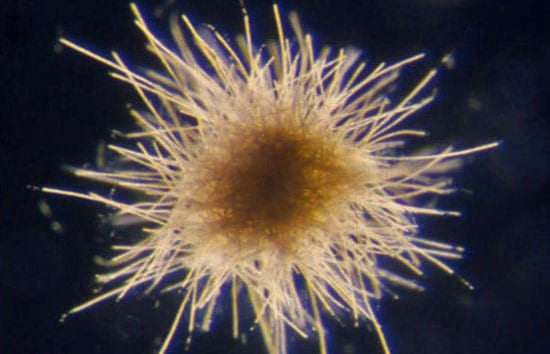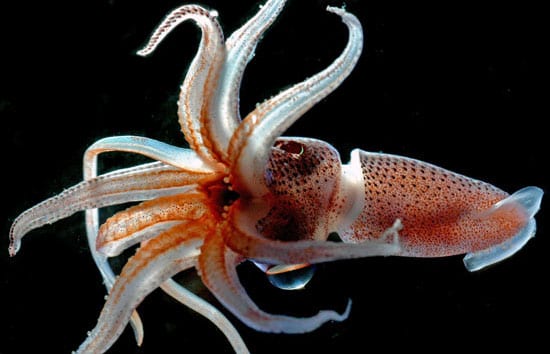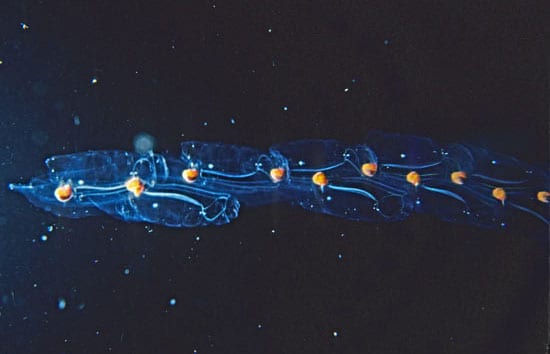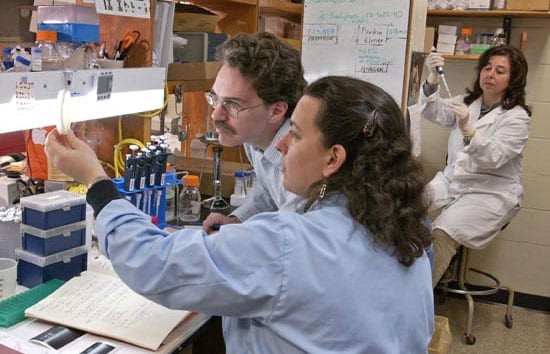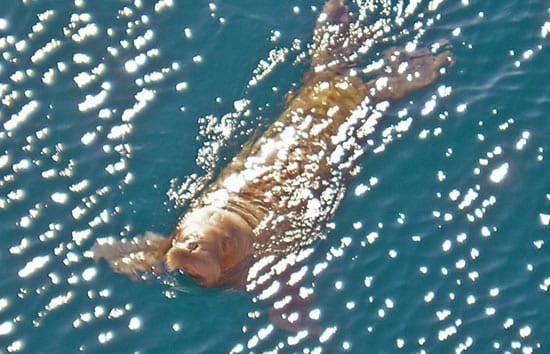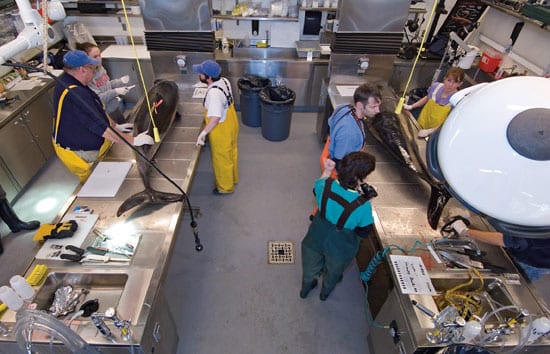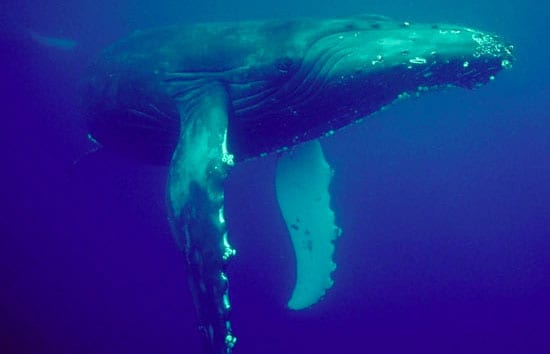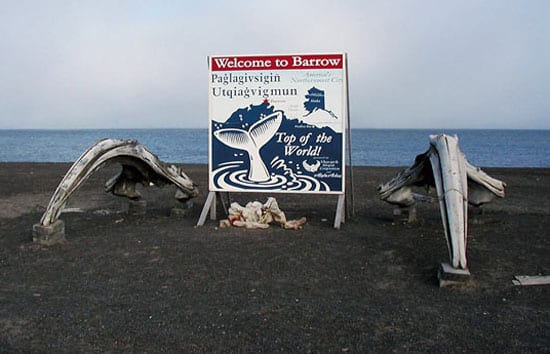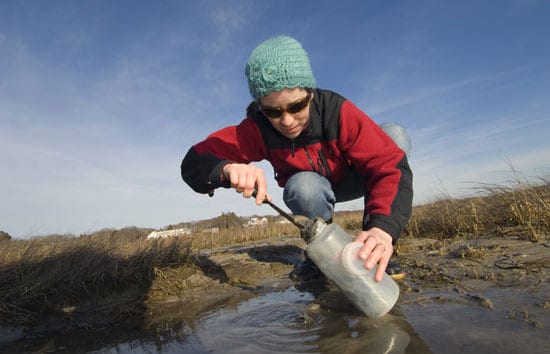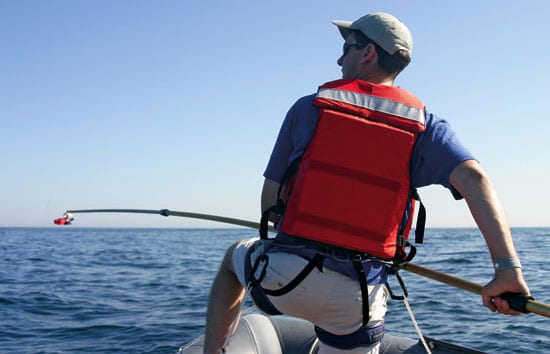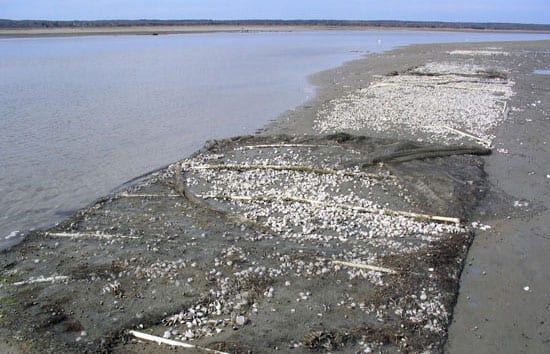Biology
What Does It Take To Break a Whale?
The ship hit the whale with a force that snapped her 14-foot jawbone like a toothpick and left a 4-foot-long crack in her skull. Known as 2150 among scientists, she…
Read MoreWould a Hagfish By Any Other Name Smell as Sweet?
It’s not hard to figure out how hagfish got their name, since they aren’t exactly warm and fuzzy. Slithery, skinny, coated in gooey slime, and often found wriggling and eating…
Read MoreDeep-sea Tubeworms Get Versatile ‘Inside’ Help
Cross sections of the tubeworm Riftia pachyptila. (Courtesy of Enduring Resources for Earth Science Education) When scientists found lush thickets of 6-foot-tall, red-tipped tubeworms on the seafloor in 1977, they…
Read MoreSea Urchin Genome Yields New Understanding of “Chemical Defensome”
The Sea Urchin Genome Sequencing Consortium, a group of 240 researchers from more than 70 institutions in 11 countries, recently announced the sequencing of the California purple sea urchin, Strongylocentrotus purpuratus.
Read MoreWhat Other Tales Can Coral Skeletons Tell?
In 2003, we traveled by ship to the New England Seamounts—a chain of extinct, undersea volcanoes about 500 miles off the East Coast of North America—to help collect dead corals…
Read MoreBeaked Whales Perform Extreme Dives to Hunt Deepwater Prey
A study of ten beaked whales of two poorly understood species shows they dive much deeper and longer than reported for any other air-breathing species, a finding of particular interest since beaked whales stranded during naval sonar exercises have been reported to have symptoms of decompression sickness.
Read MoreLegions of Legionella Bacteria
Salty ocean water can be a nuisance. It’s undrinkable and it corrodes nearly everything it touches. But salt water’s inhospitality has always had one benefit: The salt kills microbes, making…
Read MoreNew ‘Eyes’ Size Up Scallop Populations
Part of the fun of fishing is never knowing exactly what might be swimming around beneath you. But that mystery is a major annoyance when it comes to keeping track…
Read MoreIsland Ferries Take on Role of Research Vessels Collecting Data about Nantucket Sound
Ferries that connect Cape Cod and the islands of Martha’s Vineyard and Nantucket are taking on another role – research vessels. Woods Hole Oceanographic Institution (WHOI) biologist Scott Gallager and…
Read MoreLullaby for Larvae
Like many babies, these tiny offspring arrived this spring amid much fanfare and a little trepidation. Never before had scientists witnessed the birth of deep-sea Antarctic corals, which unlike like…
Read MoreOcean Microscope Reveals Surprising Abundance of Life
Towing an underwater video microscope across the Atlantic Ocean, two scientists found unexpected abundances of colonial cyanobacteria that fertilize the oceans with nitrogen. The bacteria may turn out to be…
Read MoreVoyage Takes a Census of Life in the Sea
Scientists collected more than 1,000 shrimplike creatures, swimming snails and worms, and gelatinous animals, including many species never seen before, on a landmark cruise to take inventory of the ocean’s…
Read MoreTransparent Animal May Play Overlooked Role in the Ocean
Salps don’t get much respect. They’ve been around for millions of years, but hardly anyone even knows they exist. Even many who have heard about these transparent, jelly-like creatures consider…
Read MoreThe Chicken and the Tern
WHOI scientists find that the dramatic difference comes down to three amino acids on a single protein.
Read MoreAbandoned Walrus Calves Reported in the Arctic
Researchers on an oceanographic voyage in the Arctic Ocean report, for the first time, baby walruses unaccompanied by mothers in areas far from shore and over deep water, where they likely could not survive. The phenomenon was coincident with movement of warm water into Arctic basins and subsequent melting of the sea ice that walruses normally utilize as resting platforms.
Read MoreMass Strandings Keep New Marine Mammal Facility Busy
Woods Hole Oceanographic Institution’s new Marine Research Facility (MRF) opened its doors just in time for a terribly busy winter season. An unprecedented number of fatal dolphin and whale strandings…
Read MoreCaught in the Middle of the Marine Mammal Protection Act
In the past few years, several research projects have been halted because of conflicting interpretations of the Marine Mammal Protection Act. Energy, shipping, and naval interests claim the MMPA hampers their ability to work in the sea. Environmentalists and animal rights want the act strictly enforced. In between are scientists.
Read MoreWhat Brings the Food that Brings the Whales?
Watching the gray, pitching ocean from the beach in Barrow, Alaska, Carin Ashjian, a biologist at Woods Hole Oceanographic Institution (WHOI), wonders if the seas are too rough for the…
Read MoreGraduate Student Discovers an Unusual New Species
Sheri Simmons gets into the rugged wilderness as often as she can, backpacking in Newfoundland, the Sierras, the Adirondacks, and Alaska—where she once encountered a grizzly bear on a trail.…
Read MoreTo Find Whales, Follow Their Food
The average adult right whale consumes about a ton of food a day, eating billions of tiny crustaceans called copepods that are packed with protein and calorie-rich oils. “To whales,…
Read MoreDiving into the Right Whale Gene Pool
Like forensic detectives, a multi-institutional team of scientists has followed a thread of DNA from the highly endangered right whale population across the oceans and back through generations.
Read MoreDoing the Right Thing for the Right Whale
The situation is urgent: Seventy years after whaling was banned, the North Atlantic right whale population has not recovered. Only 300 to 350 remain, and the species is headed toward…
Read MoreScientific (and Surfing) Safari
Eric Montie has a great tan, photos of huge waves taped above his computer, and a penchant for grabbing his short board and racing to the beach at a moment’s notice.…
Read MoreA Mysterious Disease Is Infecting Northeast Clam Beds
Scientists follow clues to the mysterious disease that is killing off clams on Cape Cod and along the Eastern Seaboard.
Read More

